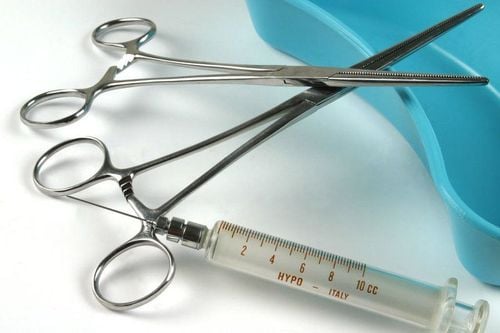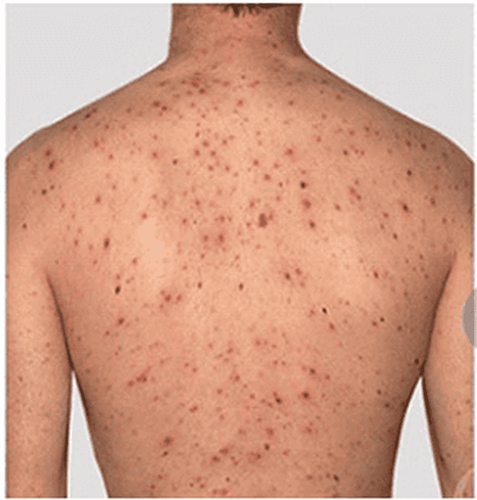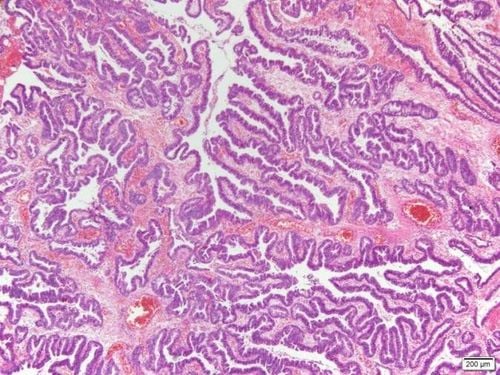This is an automatically translated article.
Biopsy is one of the most commonly used and highly effective methods of diagnosing cancers and a number of other diseases. However, many patients worry that taking a biopsy sample is dangerous or not? To answer the above question, please read through the article below!1. What is a biopsy?
Biopsy, also known as cytology, is a medical test usually performed with surgery to diagnose most cancers or infections of unknown cause.Biopsy is done by taking a small sample of tissue from anywhere on the body. For example, the skin, internal organs or some other structure, which is then observed under a microscope to find abnormal cells in their structure and function, thereby helping to detect the type of disease that the disease is causing. the person is suffering from.
Biopsy is a rather complicated method, so it is often used when the patient has done simpler tests before, such as ultrasound, X-ray, CT,... and still No definite conclusions about the disease have been made.
2. Types of biopsy tests
There are many different types of biopsy tests, depending on the patient's health condition and suspected area on the patient's body, the doctor will choose the appropriate biopsy method. Regardless of the type of biopsy performed, the patient will be given a local anesthetic to relieve pain in the area being performed. Several types of biopsies are commonly used, including:2.1 Needle biopsy A needle biopsy is used to obtain tissue samples from tumors under the skin or other organs of the body. Your doctor will use a long, specialized needle that is inserted through the skin into the liver, kidney, bone marrow, thyroid gland, or an abnormal tumor.
2.2 Skin Biopsy A skin biopsy is used to diagnose certain skin diseases. Your doctor will use a specialized instrument to punch a small hole through the top layers of your skin to take a sample of skin that needs to be biopsied.
2.3 Endoscopic biopsy This test uses an endoscope that goes into the nose, mouth, urinary tract, and anus to make it easier for the doctor to see the inside of the body.
2.4 Excisional biopsy A test that removes part or even all of the tumor from the body.
2.5 Intraoperative Biopsy During surgery, a small tissue sample is taken for a quick examination and the results are available in just a few minutes. This test helps guide surgery or further treatment of the disease.
2.6 Bone marrow biopsy A bone marrow biopsy is also done to check if cancer cells from another part of the body have spread to the bones.
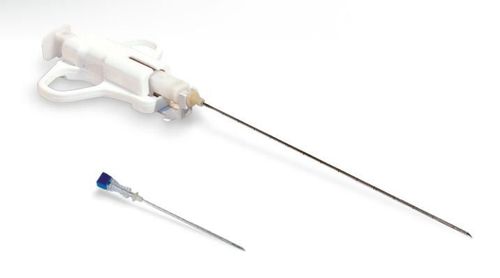
Sinh thiết kim được áp dụng để lấy các mẫu mô từ khối u dưới da hoặc các cơ quan khác của cơ thể
3. What does the biopsy test do?
The biopsy test helps the doctor make an accurate diagnosis of the disease by taking samples of the body's tissues for examination when inaccessible from the outside. Biopsy is not only used to diagnose cancers, but it is also used to diagnose a number of other conditions as well as the extent of disease progression. Here are some effects of biopsy in specific cases:Biopsy of cancer: In case the patient has a tumor or swelling somewhere in the body for which the cause is unknown Biopsy is the most effective way to determine whether a patient has cancer or not. Liver biopsy: The test helps doctors easily diagnose tumors or cancer in the liver, cirrhosis when the liver is scarred from injury or previous disease. In addition, it is also used to assess how a patient will respond to treatment. Stomach biopsy: Helps determine if stomach conditions, such as stomach ulcers, are caused by nonsteroidal anti-inflammatory drugs. In addition, a small bowel biopsy is also done to evaluate whether the patient has conditions such as anemia, malabsorption or celiac disease. Inflammation test: Determines the cause of inflammation. Test for infection: Find out the cause of the infection.
4. Biopsy procedure

Vài ngày trước khi sinh thiết, người bệnh cần ngưng sử dụng các loại thuốc đang sử dụng
4.1 Preparation Several days before a biopsy, the patient needs to abstain from certain foods or medications. In addition, the patient also needs to abstain from eating and drinking for several hours before the test. The patient will have a blood test and evaluate the possibility of allergies to some related substances.
4.2 During the biopsy If a needle or staple biopsy is performed, the patient will be given a topical anesthetic by the doctor to relieve pain. For patients undergoing excisional or endoscopic biopsies, local or general anesthesia is required. The biopsy usually takes place within a few minutes to a few hours.
4.3 After the biopsy The patient will stay in the hospital for a few hours while the doctor monitors his health and is given painkillers. To ensure that occult bleeding does not occur in the affected internal organs, a blood count may be performed. In addition, the doctor may also ask the patient to perform a few other tests such as X-rays, diagnostic imaging. After a few hours, the patient can go home and resume normal activities.
4.4 Biopsy Analysis After a tissue sample is removed from a patient's body, it is sent to a pathology laboratory. Tissue is separated into thin slices, then a portion of the tissue is placed on a slide and examined under a microscope, the rest of the tissue is stored for use in later studies. Through the microscope, the doctor can find abnormalities in the cell structure, thereby diagnosing the disease. This analysis usually takes several hours or even days depending on the complexity.
5. Is taking a biopsy sample dangerous?
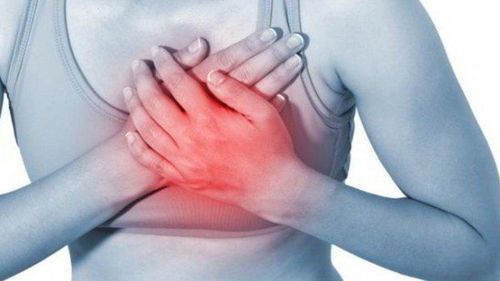
Người bệnh có thể cảm thấy đau ở khu vực sinh thiết
Itching, discomfort Bleeding and bruising Feeling pain at the biopsy area Infection or inflammation Wounds take a long time to heal Some In female patients, performing a biopsy of the breast can cause breast deformity. The shape of the breast will change depending on the location and size of the tumor and the amount of surrounding tissue removed.
Although there are some risks involved in performing a biopsy, it is still very effective in diagnosing cancer and other diseases early. Early detection of the disease is the golden key to increasing the survival rate of the patient.
To learn more about biopsy methods at Vinmec, you can contact Hotlines of hospitals, or register online HERE.
MORE:
Gastric mucosal biopsy to diagnose stomach cancer Role of biopsy in diagnosing skin cancer Measures to diagnose skin cancer






